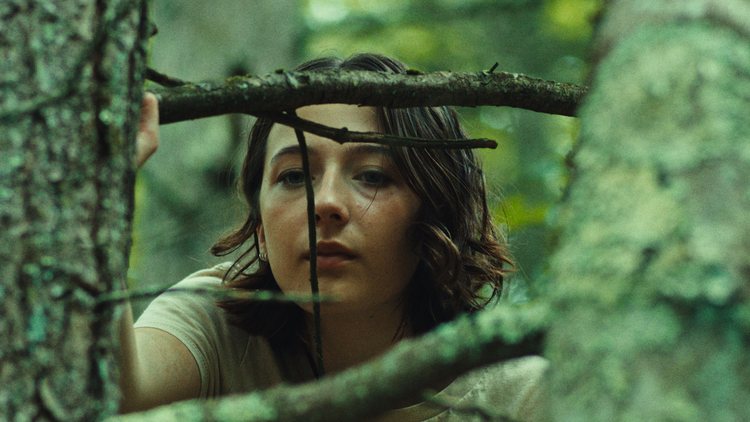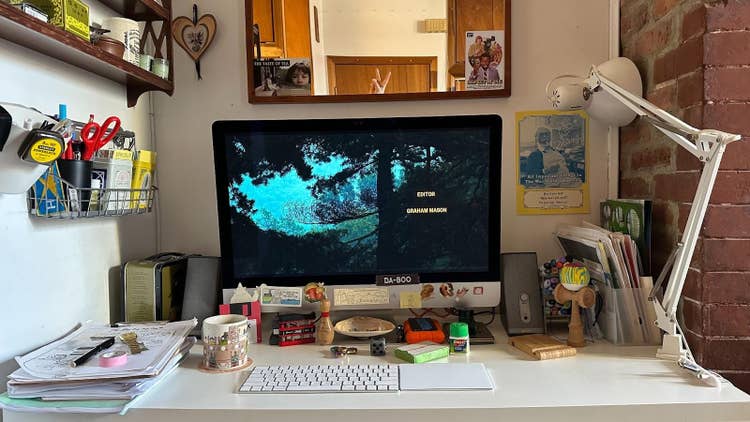Producer and editor Graham Mason used Adobe Creative Cloud to edit Sundance’s “Good One”

Image source: Sundance Film Festival.
“Good One” tells the story of a daughter, father and his friend who go on a backpacking trip in the Catskills. While experiencing the forests’ serenity and natural beauty, 17-year-old Sam also contends with the competing egos of her father and his oldest friend.
Graham Mason, producer and editor of “Good One”, dives into editing this artistic film and discusses how he used Adobe Premiere Pro to share this intimate story filled with poetry and humor." to: "Graham Mason, producer and editor of “Good One”, dives into editing this artistic film and discusses how he used Premiere Pro — a tool he has been using for a decade — to share this intimate story filled with poetry and humor.
How and where did you first learn to edit?
I first learned to edit in 2002 in an “Intro to Filmmaking” class at the University of Michigan in Ann Arbor. I did my very first edit by physically cutting and taping together 16mm footage on a Steenbeck, and then later in the semester, I learned to edit mini-DV footage in iMovie. It was cool to do both linear and nonlinear editing in the same class, and I was lucky to land right on the edge of both technologies.
How do you begin a project/set up your workspace?
I drag the footage and sound into respective bins and make a stringout of all the footage for every scene because I like to watch and consider everything. If I’m lucky, an assistant editor does that for me, and I can jump right in.
Tell us about a favorite scene or moment from this project and why it stands out to you.
There’s a very heartbreaking scene in “Good One” that leads to a dialogue-free sequence of two characters swimming. When I was first cutting together the scene, I felt like it could use a song. As editors often do, I did a quick search for a temp music track that I thought might work in the scene, and after about five minutes of poking around, I dropped in a very pretty Mary Lattimore cover of a Bill Fay song called “Love is the Tune.”
The director of the movie, India Donaldson, loved the song, and thanks to the incredible work of our music supervisor, Taylor Rowley, we were able to license the exact temp track that I dropped in. The song is very moving in the scene, and I love that it was a quick pull that was done intuitively and somehow managed to make it all the way to the final product (that is rare).
What Adobe tools did you use on this project and why did you originally choose them? Were there any other third party tools that helped enhance your workflow?
I used Premiere Pro on this project. I’ve been using Adobe Photoshop since I was in highschool, so Premiere Pro came naturally to me, and it’s been my main editing tool for a decade.
We didn’t use any third party tools, but right before we delivered our edit for Sundance (which was done before we had a proper sound mix), I upgraded to the new Beta version of Premiere Pro and used the new AI audio cleanup filters on some of the dialog that had a lot of noise in it. It really worked wonders. We were able to have a pretty robust temp cleanup of the audio before we submitted the film to festival programmers.
Our colorist and sound mixer used Frame.io to share links so we could review and leave comments.
If you could share one tip about Premiere Pro, what would it be?
If you don’t have an external monitor at your workstation (like me!), create a keyboard shortcut that lets you toggle full-screen playback.
Who is your creative inspiration and why?
Lately, I’ve been thinking about filmmakers who do many different kinds of things, and you can feel that they have a lot of curiosity and love for working in different forms.
I think David Lynch is a good example of this — the way he bobbles between movies, paintings, music, woodworking and youtubing. One of my favorite things he did was a comic strip called “The Angriest Dog in the World” that ran in the LA Reader for nine years. It had the exact same art in every comic, but different dialog bubbles, which he dictated to an assistant over the phone each week — for nine years!
Another wonderful example is the filmmaker Albert Lamorisse who directed the classic French children’s film “The Red Balloon,” invented the board game RISK, and was an avid hot air balloonist. What a combo.
What’s the toughest thing you’ve had to face in your career and how did you overcome it? What advice do you have for aspiring filmmakers or content creators?
The toughest thing is not getting paid enough money to make a decent living. What I would recommend is to keep your head down and focus on your creative work, collaborate with people who you like and respect, and take the money jobs when you need to take them to pay your rent and eat.
It’s your job as an artist to pursue the most specific and true-to-yourself work that you are capable of making. You can’t wait for someone to come out of the woodwork to pay you to do that — you just have to keep plugging away.
Share a photo of where you work. What’s your favorite thing about your workspace and why?
My workspace is currently in the kitchen of my railroad apartment in Brooklyn, and my favorite thing about it is the proximity to my refrigerator (about nine feet).

Image source: Graham Mason, “Good One” producer & editor.